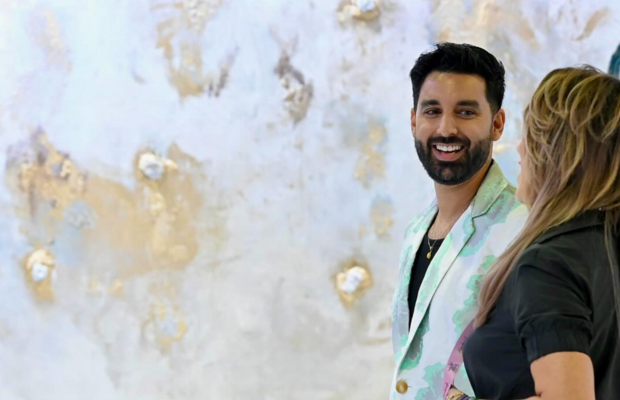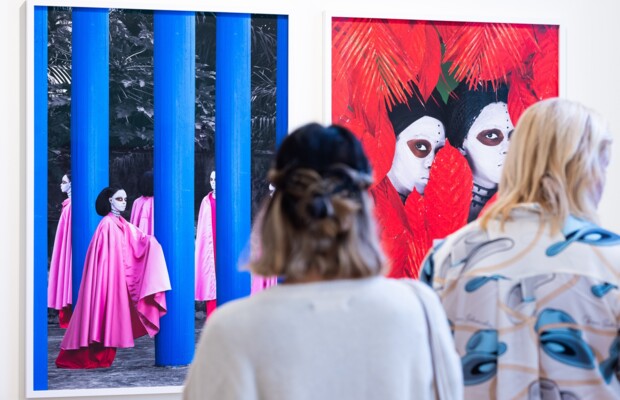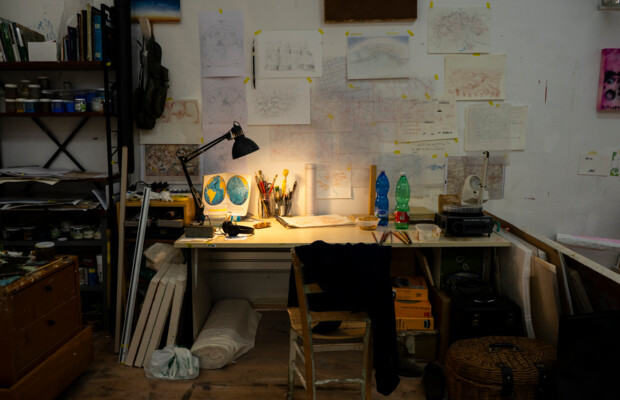Bridging Rembrandt's Masterpieces and Modern Diversity: The Role of the Creative Director in Museums' 150th Year
Interview with Tanja Elstgeest, Director of Museum De Lakenhal
Museum De Lakenhal, which opened its doors in Leiden on 1 May 1874, will be celebrating its 150th anniversary with a very special exhibition; Rembrandt’s Four Senses – His First Paintings. The world-renowned painter, who is originally from Leiden, created this series of paintings in his hometown when he was around 18 years old. Remarkably, his studio likely resided near the current site of Museum De Lakenhal. A pivotal moment in the museum's history was its acquisition of his Spectacles Seller in 2012. While two of Rembrandt's Senses—Stone Operation and Three Musicians—became part of The Leiden Collection owned by Franco-American collector Thomas Kaplan in 2007, the third, Unconscious Patient, remained elusive until its appearance at a New Jersey auction in 2015, subsequently acquired by Kaplan in 2016. The four works will be on display at the museum for 150 days to celebrate the museum’s 150 years, from the 20th of January to the 16th of June, 2024.
follow.art had the valuable opportunity to interview the director of Museum De Lakenhal, Tanja Elstgeest to discuss the significance of this exhibition, the history of the institution, and what is coming up next for it.
Nehir Adiloğlu: I want to start with a really short question. I didn't know that only four of Rembrandt’s senses were found and that the Allegory of Taste was lost. I wanted to ask you if there's any insight about what might have happened to it. Do you have theories in the museum or art-collecting world about this?
Tanja Elstgeest: Actually, no. There's no specific description or mention of it in historical texts. Sometimes, there are paintings described in old inventories or hinted at in titles, but not in the case of this painting. It's assumed that logically the five senses were depicted, but perhaps the artist chose to stop at four for personal reasons. It's also possible that the painting depicting the fifth sense has yet to be recognized as a Rembrandt piece. Rembrandt attributions can be challenging, as evidenced by the late recognition of the Unconscious Patient in 2015.

N: If the fifth eventually resurfaces, would you aim to acquire it for the museum?
T: Absolutely. We'd make every effort to acquire it. However, Rembrandt pieces are exceptionally expensive, and with the knowledge of the missing fifth sense, it's likely that a private collector would have a higher chance of acquiring it.

N: For the readers who are not familiar with the details of Rembrandt’s life, could you expand on why it is significant for the Museum de Lakenhal to celebrate its 150th anniversary by exhibiting Rembrandt's Four Senses?
T: Rembrandt was born in Leiden, and his early years are closely tied to the city. Leiden played a pivotal role in nurturing young talents, including Rembrandt, setting the stage for the Dutch Golden Age of painting in the 17th century. Our museum holds some of his earliest known works. It's very nice to celebrate 150 years of our museum and the beginning of his talent in these paintings.
N: Museum De Lakenhal opened its doors on May 1st, 1874, but until now it has never shown Rembrandt's Four Senses. Why did it take so long for Rembrandt to return to his home city?
T: We've previously exhibited three of the senses together in 2006. None were in our possession at the time, and the fourth painting was yet to be discovered. Acquiring Rembrandt paintings has always been challenging. In 2012, we managed to acquire one painting ourselves, but it wasn't until Thomas Kaplan's involvement, who now owns three of the other senses, that we could bring all four together for this special exhibition. It's important to bring them all together, and he also loves to show the public his collection in general, and because of that, he gave us the opportunity to show all four of them together.
N: On the museum's website, you've talked about how Rembrandt was good at observing the people around him on the street and in the city. How are the city of Leiden and its inhabitants represented in these works? In what ways does the Four Senses collection identify with the city of Leiden?
T: I think it is important to mention that in the 17th century, usually only the real elite people were painted or portrayed in paintings and what Rembrandt does is that he uses the people around him as his model. For example, we know that his father was partly blind and he probably uses him as a model in the painting about vision. So you get a kind of inside view of the people around him and because of that you also get this feeling that you get to know the city in the 17th century. I think when you leave after visiting this exhibition, you walk out of the museum and you are directly time- traveling to the 17th-century city center.

N: When he was 25, Rembrandt moved to Amsterdam and produced most of his well-known works there. What kind of differences do you see between the pieces he created in Leiden and Amsterdam?
T: You see in the paintings that we have in our museum that they are not perfect. For example, the way he paints the hands is not the same quality as in his later works. Often you can assess the skills of a painter by looking at the hands, since they are very difficult to draw accurately for most. But you also see his playfulness. You can see how he started experimenting with using light and dark to contrast and how he develops that idea in his later works, for example in The Night Watch. He is much more masterful in using that technique in that painting but already in Four Senses, you see this playfulness with the light and the dark and also the way he builds the texture of the fabrics and the clothes.
N: Knowing who he grew up to be, what would you want the visitors to pay attention to in young Rembrandt’s works?
I hope they see the humor. See the fun side of how he represents people. And the beginning of this talented young painter’s career. I also hope that people recognize the quality of his creativity which is really special.
N: Since Leiden was “the cradle of Dutch painting” and Rembrandt had a massive influence over this, how exactly do you consider other artists and painters featured in the Museum De Lakenhal to be influenced by Rembrandt’s artistic style?
T: The connection between Rembrandt and his contemporaries in Leiden is fascinating. Their collaborative spirit and mutual influence shaped Dutch art profoundly. By exhibiting the works of Rembrandt alongside his peers, visitors can appreciate the interplay of styles and ideas, enriching their understanding of the development of 17th-Century Dutch Painting.
And Rembrandt, he really went his own way. So, I very much appreciate when people recognize these connections. It's not merely a coincidence; oftentimes, artists don't work in isolation. You know, this cross-influence between individuals is crucial for becoming a skilled artist or technician. So, I really appreciate hearing that you saw that interconnectedness in our exhibitions.
N: It was certainly easy to notice it because of the way the paintings were placed. There were other Leiden-based painters from the same era in the same room with Rembrandt’s Four Senses, so the visitors had the chance to look at them back to back.
Yes, we’re trying to convey this story of interconnectedness in the way the paintings are presented. But with this current presentation, people seem to grasp it better. They're making connections between different paintings and understanding what we're trying to communicate.

N: What kind of insight does the Museum De Lakenhal’s collection offer about Dutch art, traditions, styles, and history? As the museum director, what kind of objectives do you have in mind for Dutch and international visitors?
T: What I appreciate is that we have these 17th-century paintings, which serve as a cradle for Dutch-centric art. As an international visitor, it's fascinating to witness this foundation. However, I also greatly admire our 20th-century spaces, with their unique style and the emergence of abstract art movements. It's wonderful to see the connection between different disciplines; which is why we have a piano in the room next to the paintings. This interdisciplinary approach encompasses painting, architecture, furniture, as well as music and poetry. Moreover, it's interesting to note that not every artist during that period followed such radical paths. There were still classical painters developing their styles in their own ways. What I particularly enjoy is the sense of cohesion when walking through the museum, where you can observe all these facets simultaneously, illustrating the diverse artistic landscape of the time. This interconnectedness between the museum architecture and the arts is what I believe visitors appreciate.
N: What significance does Museum De Lakenhal's 150th anniversary hold?
T: I very much like that the museum started with the collection of The City Hall, which was about the celebration of the liberation of Leiden in the 16th century from the Spanish. Not only the elite of the city came, but also on Sundays the museum was open for free so people with low income could come and visit the museum. It was a museum of the whole city and not only of the elite. So that's what I like about the place – that it connects the history of the city and the art of this city.
So it's also a museum that is, in that sense, always very connected to the people who made it possible that it's still there after 150 years.

N: What are some notable changes and updates from Museum De Lakenhal leading up to its 150th anniversary?
T: The recent renovation and reopening in 2019 revitalized the museum, restoring its historical charm. Additionally, our commitment to collaborating with contemporary artists, like currently with the South Korean artist Kimsooja, ensures that the museum remains relevant and engaging for diverse audiences.
N: It is important for museums to provide platforms to diverse voices, especially in places such as the Netherlands where the demographic is very diverse in lots of different ways. Museum De Lakenhal seems to put a great emphasis on this, currently having the exhibition, “Strijden Ga ik” (“I will Fight,”) that features Anton de Kom and the Surinamese Student Union. What kind of projects does the museum intend to undertake in the future to highlight the importance of diversity?
T: For example, we are going to work with The artists Sarah van Lamsweerde in collaboration with Eugenie Boon and Alicia Hoost. They did a proposal wherein they reflect on our collection. In one of the paintings upstairs, there's a black boy. However, we don't know a lot about him. The artists are going to embark on a project where they will attempt to tell his story or reflect on his life from an artistic perspective. I think it's a very nice way to address these kinds of subjects. Sometimes, when we don't have all the historical details, artists can help by conducting artistic research or offering a different viewpoint. They have another role; they can imagine and provide another perspective. This approach works well in historical museums to facilitate dialogue

N: What kind of innovations and changes do you think this new chapter will bring to the museum?
T: I think there are two interesting topics that we invite artists and researchers to help us with, which are to look at our colonial past and to see how diverse our collection is and how we're going to translate it for the public. Another thing is searching for different formats of presentation. We are working on opening up the idea of the museum experience or how you walk through the museum or how you exist in the space – I think that is something that is developing very much at this moment in various museums, but also in Museum De Lakenhal.
You can visit Rembrandt’s Four Senses – His First Paintings in Museum De Lakenhal, Leiden till the 16th of June, 2024.
Share the post:












